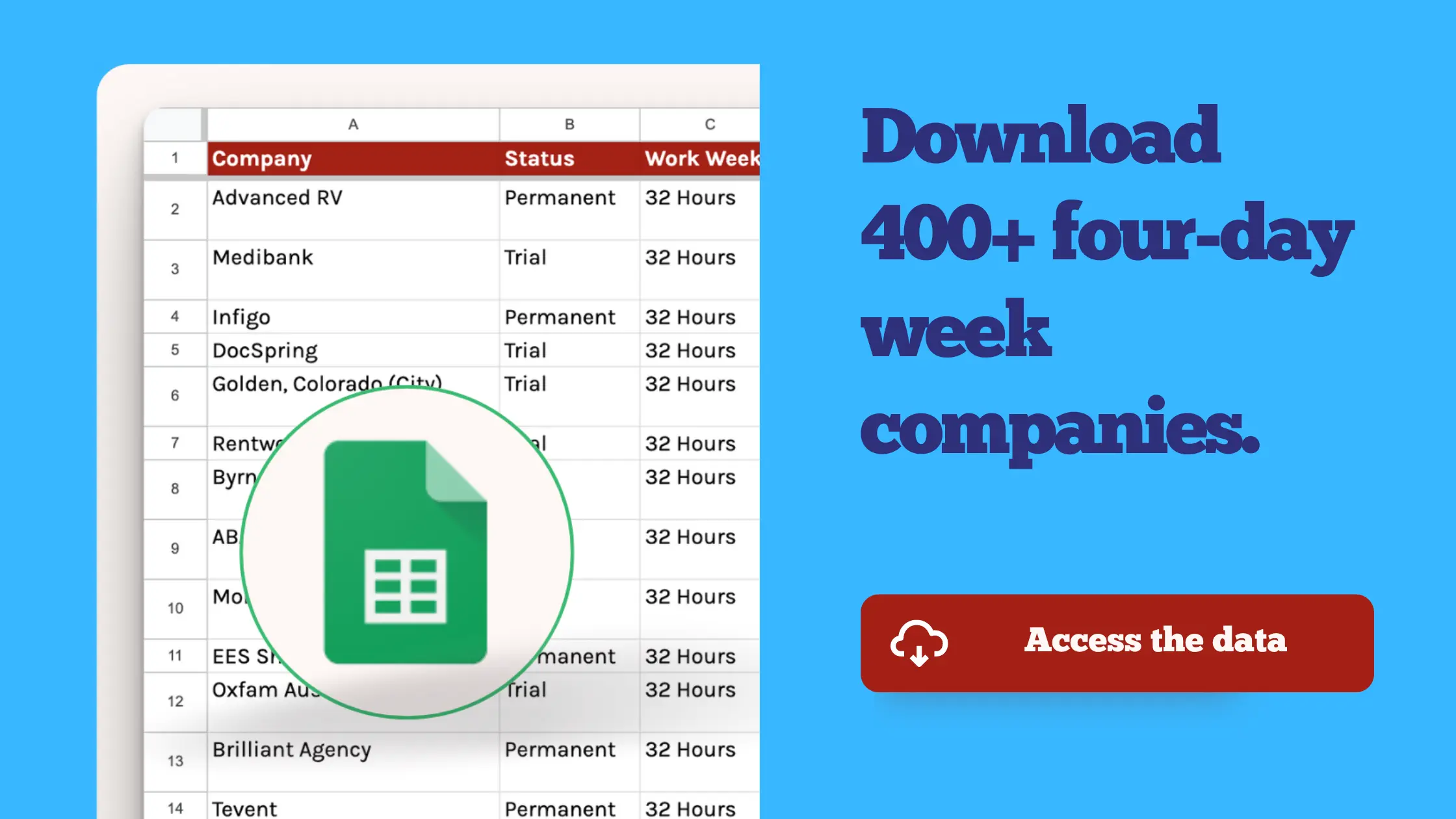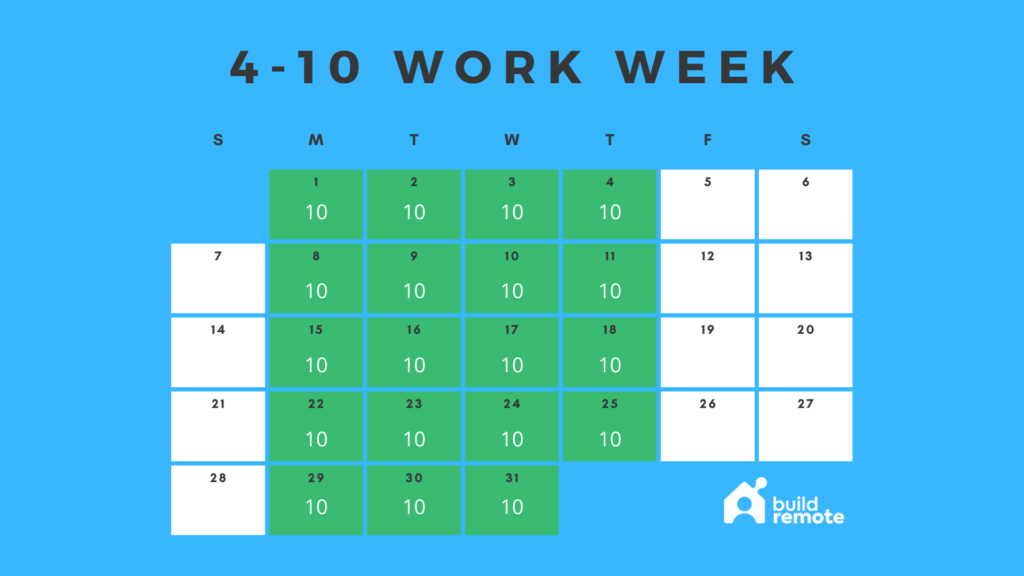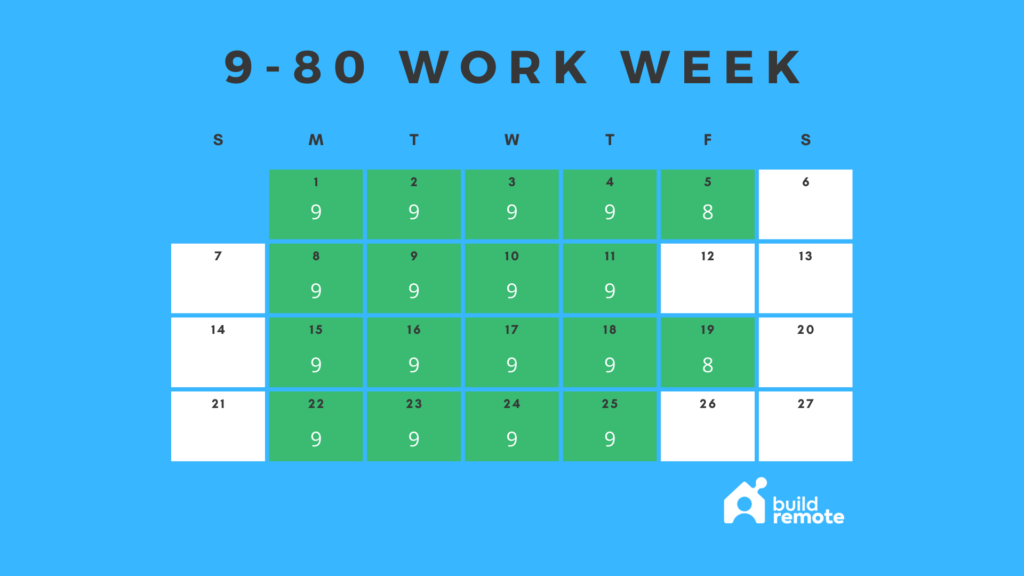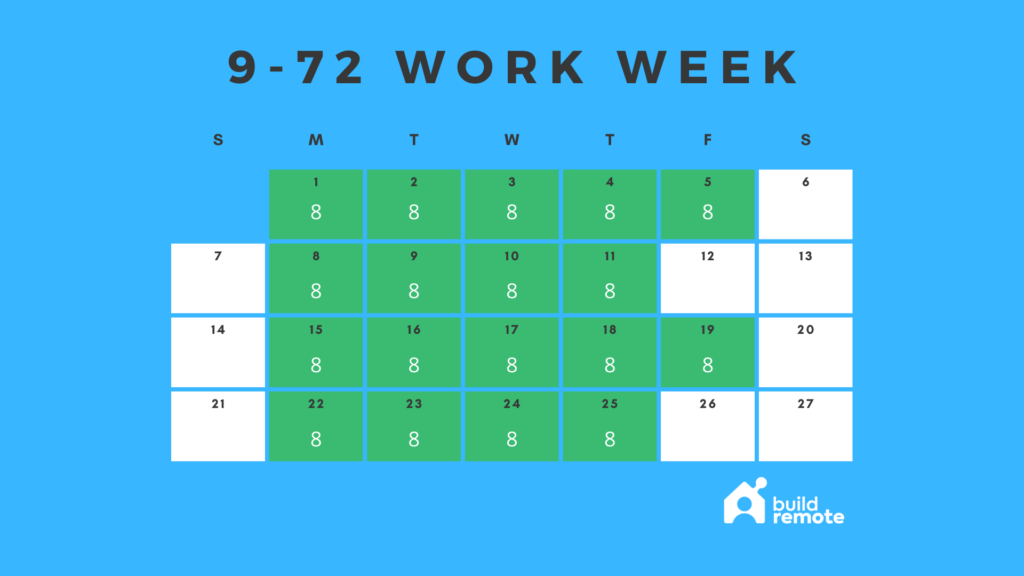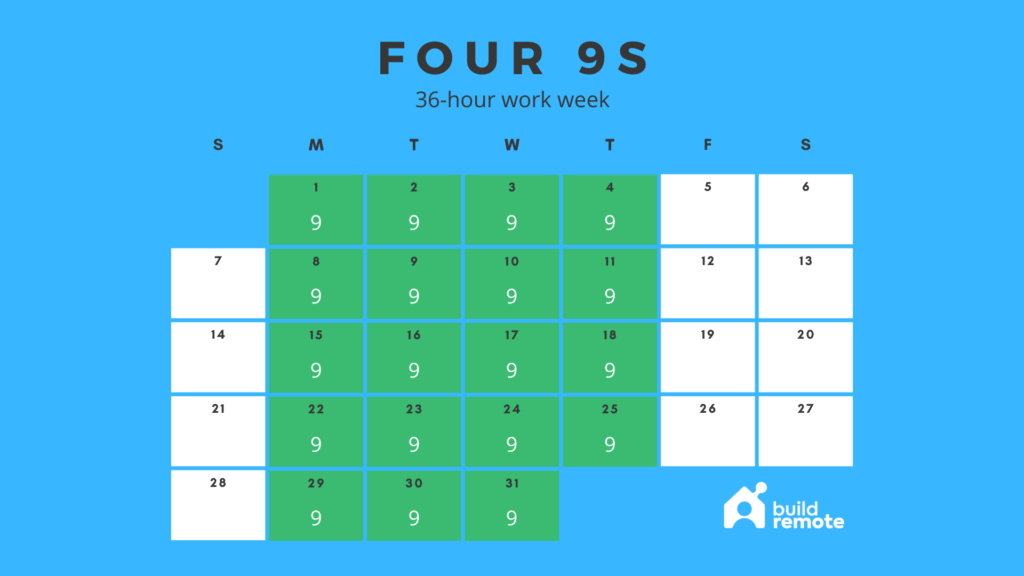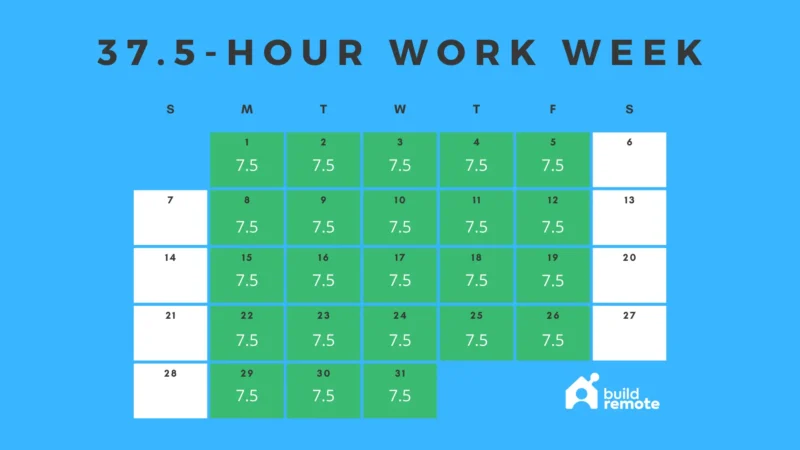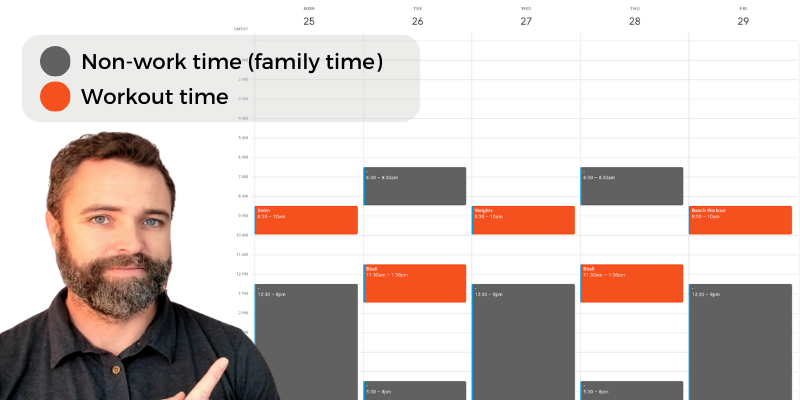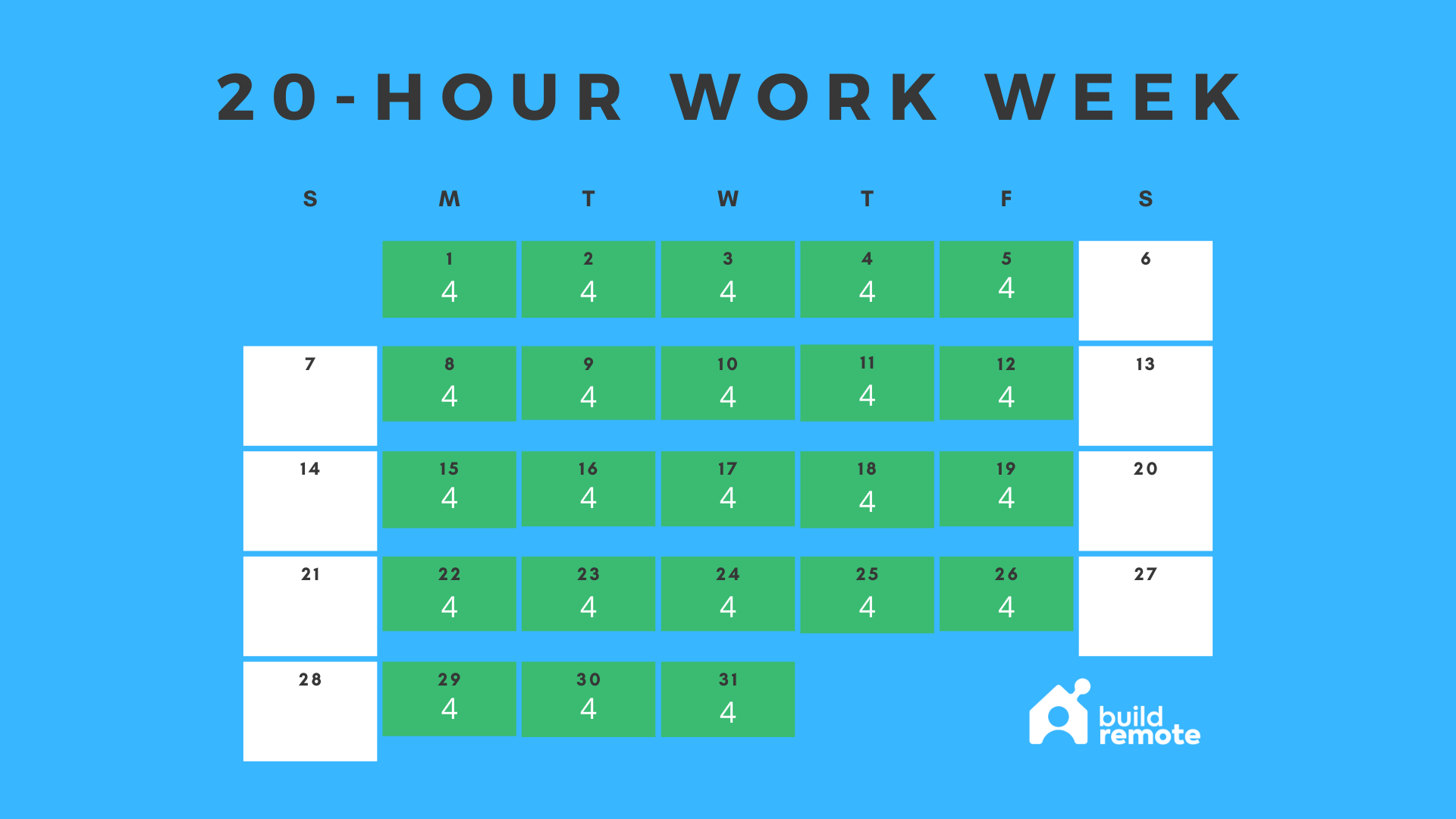9 Short Working Week Schedule Options
If you’re looking to implement a shorter working week for you or your company, you’ve come to the right place.
Below, we’ll cover every short working week schedule being used right now.
Under each schedule template, you’ll see a description and examples of companies using the schedule currently.
👉 Short Work Week Schedule Examples 👈
4-Day Work Week

What is the 4-day work week schedule?
The company has four working days per week rather than five and each day consists of the normal eight-hour work day. That makes for a 32-hour work week (and a three-day weekend) for the full-time employees at that company.
When people talk about the four-day work week, they are typically referring to this schedule. In most cases, companies would remove Friday from the work week. Here’s a common format:
- Monday: 9-5
- Tuesday: 9-5
- Wednesday: 9-5
- Thursday: 9-5
- Friday: Off
See: Every Company Doing A 4-Day Work Week
| Read: 32-Hour Work Week: The Complete Guide |
4-10 Work Schedule
What is the 4-10, compressed schedule?
The full-time employees at a company work four days per week with 10-hour work days. This compresses a typical 40-hour work week from five days into four, giving the company the same amount of hours but in fewer days.
Here’s a common format:
- Monday: 8-6
- Tuesday: 8-6
- Wednesday: 8-6
- Thursday: 8-6
- Friday: Off
| Read: 4-10 Work Schedule: Complete Guide |
9-80 Work Schedule
What is the 9-80 (also known as the 5-4/9) schedule?
A 9-80 work schedule isn’t technically a four-day work week since every other week has four working days. But this is a common, alternative schedule that companies consider to mix up the standard work week.
Over a two-week period, the full-time employees work a normal 80 hours. But instead of working 10 business days, the company works nine. Like the 4-10 schedule, the 9-80 schedule compresses the same amount of hours into fewer days. Typically, the company would give every other Friday off and then spread those eight hours that were missed over the other nine days. Here’s a common format:
Week 1
- Monday: 9-6
- Tuesday: 9-6
- Wednesday: 9-6
- Thursday: 9-6
- Friday: 9-5
Week 2
- Monday: 9-6
- Tuesday: 9-6
- Wednesday: 9-6
- Thursday: 9-6
- Friday: Off
| Read: 9-80 Work Schedule: Complete Guide |
9-72 Work Schedule
What is the 9-72 schedule?
This is where employees have a normal five-day, 40-hour week followed by a four-day, 32-hour week. In other words, every other Friday is off with normal work days outside of that. If you have positions that are required to be on during normal work hours (like client work or support), you could have half of your team on each Friday for coverage.
Here’s a common format:
Week 1
- Monday: 9-5
- Tuesday: 9-5
- Wednesday: 9-5
- Thursday: 9-5
- Friday: 9-5
Week 2
- Monday: 9-5
- Tuesday: 9-5
- Wednesday: 9-5
- Thursday: 9-5
- Friday: Off
Summer Friday Policy
What is a summer Friday schedule?
During the summer months only, a company will offer some form of Fridays off. It’s a seasonal change to the work week schedule. This could be offered in the form of a seasonal 4-10, 9-80, 9-72, or by simply cutting Fridays from the schedule during the summer months.
Here’s a common format:
- Monday: 9-5
- Tuesday: 9-5
- Wednesday: 9-5
- Thursday: 9-5
- Friday: Off
Four 9s (36-Hour Work Week)
A variation of the four-day work week is to work four nine-hour days to get to a 36-hour work week. If you currently work eight hours per day, however, this would increase the daily workload to reduce the weekly workload.
37.5-Hour Work Week
This is the most common format for a 37.5-hour work week. You are at work for eight hours per day and take a 30-minute unpaid lunch break to get to 7.5 hours of work per day.
| Read: 37.5-Hour Work Week |
My 25-Hour Work Week
I work about 25 hours per week on average.
You can see a picture of my weekly calendar above and you’ll notice that I use the calendar in reverse. I add blocks to indicate when I’m not working and then back into my work hours after that. The white/blank space is my opportunity to work. Typically, I’ll work about 25 hours per week but I can increase that by starting earlier, working at night, or grabbing a block of time on the weekends.
Here’s the pattern of when I work:
- My wife and I trade off afternoons working and spending time with our kids during the week.
- We each get to about 20-25 hours per week and have plenty of family time.
- Having bursts of work time in 1-3 hour blocks really helps me focus, too.
| Read: 30-Hour Work Week |
20-Hour Work Week
A 20-hour work week is often structured as five work days with four hours of work per day. An alternative format is to work 6-7 hours per day for three days per week. These are the types of people who work this schedule: 1) part-time employees, 2) freelancers or contractors, or 3) entrepreneurs who own their own businesses.
| Read: 20-Hour Work Week |

